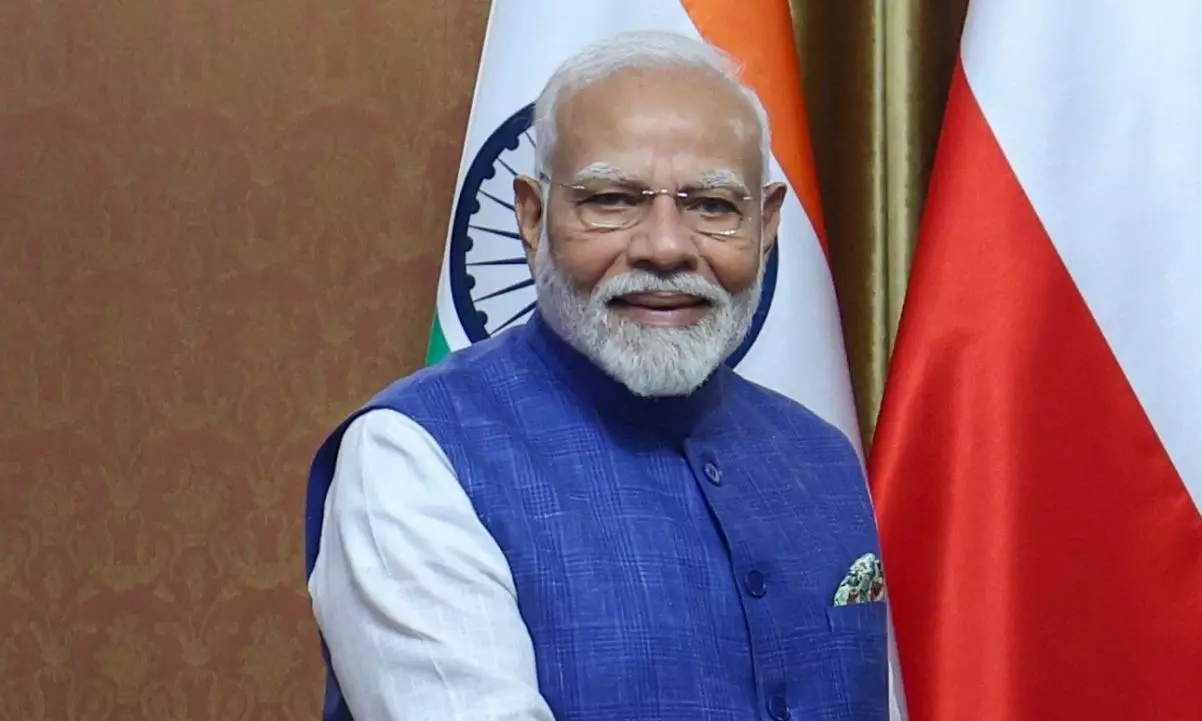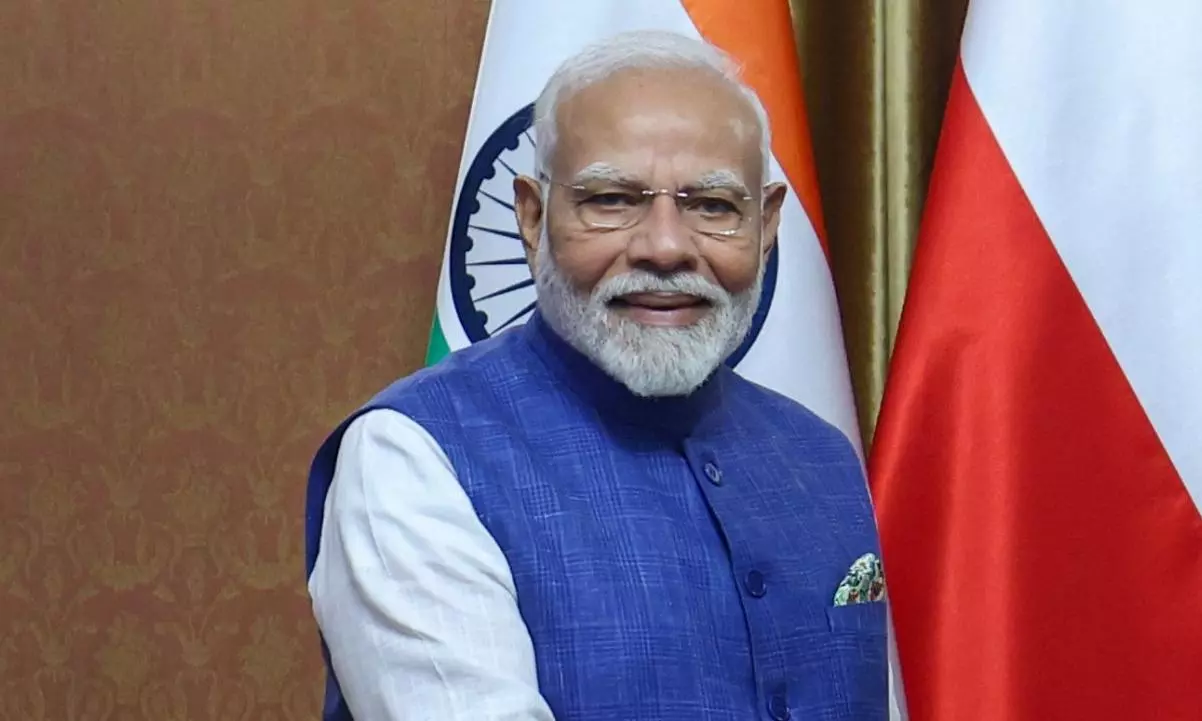
The Narendra Modi government has declared that it will pursue a “Neighborhood First” policy. How has it fared, is there any undisputed yardstick to judge its efficacy, and what are the constraints on even well-intentioned measures to make it succeed? To my mind, we need to avoid knee-jerk evaluations because South Asia must rank as one of the most troubled regions in the world. Any evaluation must be holistic, not piece-meal, nor restricted to any specific time phase or incident. In this broader perspective, there are certain unalterable coordinates which are constant, and have to be factored in.
India has a land border with seven countries — Bangladesh (4,096 km), China (3,485 km), Pakistan (3,310 km), Nepal (1,752 km), Myanmar (1,643 km), Bhutan (578 km), and Afghanistan — through Pakistan Occupied Kashmir (106 km). With Pakistan and China, the border is disputed and a source of perennial military friction. Resolution is not easy, because the demands from them are beyond acceptance. Pakistan claims all of Jammu and Kashmir, and China, apart from illegally occupying Aksai Chin, claims the whole of Arunachal Pradesh, which it calls “South Tibet”. China’s consistent policy with India is engagement with containment. In pursuit of this, it periodically flexes its military muscle on the border, most recently in Ladakh, where it appears to have forcibly occupied territory ahead of the recognised Line of Actual Control, even as trade with it balloons (with India facing a huge trade deficit), and high-level visits continue. Pakistan exports organised terror into J&K, and elsewhere. There are problems with other countries, too. From Bangladesh there is illegal immigration, with Myanmar smuggling of drugs and arms — clearly visible in the ongoing crisis in Manipur, and with Nepal counter-claims on border demarcation.
It does not help that many of our territorial neighbours are politically unstable. In Pakistan, where the military and the ISI are de facto rulers, the country is currently in the grip of violent civil unrest as, following an obviously rigged election that brought in the Shehbaz Sharif government, supporters of jailed Imran Khan are on the streets seeking his release. Bangladesh is in turmoil after the fall of the Sheikh Hasina government, with Islamic fundamentalism on the rise. In Nepal, Communist Party-led coalition governments are constantly wobbly. And insurgency grappling Myanmar, ruled by a repressive military junta, has left us with the Rohingya refugees.
India also has a very long coastline of over 7,000 km. We share maritime borders with Sri Lanka and Maldives, and from Andaman-Nicobar, with Thailand, Indonesia, and Myanmar. In Sri Lanka, a new government led by the left leaning Anura Dissanayake has recently won the election. In Maldives, the openly pro-China President, Mohamed Muizzu, is in the saddle. As a general stratagem, India must further strengthen its coastline defences. We should never forget that the Pakistani terrorists who wreaked havoc in Mumbai on November 26, 2008, literally walked into the financial capital unopposed.
China’s consistent meddling in the region creates additional problems. Pakistan is its staunch ally, and the possibility of India facing a two-front simultaneous war against both these implacably hostile countries can never be ruled out. In Nepal, Chinese influence has grown exponentially through the Communist parties, and economic incentives. China has emerged, too, as Sri Lanka’s largest creditor, financing several large infrastructure projects, including the strategic Hambantota port.
India, as the largest and most powerful country in the region, is indispensable to its neighbours. But often the old saying kicks in: “Why do you hate me? I have not helped you.” Many neighbours are suspicious that India uses its overlapping historical, cultural and ethnic ties to interfere in their internal affairs. Sometimes our intervention is asked for, such as in the creation of Bangladesh (1971), the involvement of the Indian Peace Keeping Force (IPKF) in Sri Lanka (1987-90) to resolve the Tamil conflict, and the quelling of the coup against President Gayoom of Maldives (1988). But even so, Sri Lanka, Bangladesh and Nepal are sensitive to any Indian internal interference, and often anti-India sentiments are fuel for their internal politics.
Often, our foreign policy also lacks nuance and finesse. An illustrative example of this is the blockade of the border with Nepal, during Prime Minister Rajiv Gandhi’s government (1989), and again under PM Modi in 2015. In fact, I initiated a short duration discussion in the Rajya Sabha in 2015 on the adverse political and humanitarian consequences of this insensitive step, which gave a fillip to pro-China and anti-India sentiments. The priority must always be to build trust, and even while providing economic assistance, which we do, never perceive to be acting like a “big brother”.
Secondly, we have to be exceptionally vigilant to the unceasing machinations of China, upgrade our counter-intelligence, and reinforce our age-old ties with new and innovative ways of cooperation. A good example of this is our assistance in building Bhutan’s 10,000 MW hydro-electric power capacity. We buy the power; Bhutan gets the revenue; it is a long-term and institutionalised win-win situation for both countries, and a break to China’s long-term interest in acquiring a strategic toe-hold in the kingdom. Thirdly, we must discreetly maintain avenues of communication with all sides of the political spectrum in these countries. In Bangladesh, we put all our eggs in Sheikh Hasina’s pro-India but authoritarian rule, and must now face the consequences. Fourthly, we must continue to strengthen our military prowess to counter Pakistan and China. We have been woefully negligent in this regard for decades, but progress is being made now and the momentum needs to be accelerated. A militarily strong India is essential for its leadership in its backyard.
Our neighbours cannot ignore us. Maldivian President Muizzu may have visited China first, but in his recent visit to India, he accepted an Indian bail-out, including a currency swap agreement, substantial financial assistance and the inauguration of a runway. The role of religion, too, is part of our neighbourhood cauldron. If India is seen to be insensitive to its Muslim minority, it provides grist to anti-India politics in the region. Similarly, the treatment of the Hindu minority in Pakistan and Bangladesh is a source of friction. India’s diplomacy must show patience, maturity and a long-term vision. There are no short-cut solutions, and, therefore, no pat evaluations.
